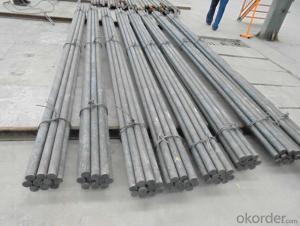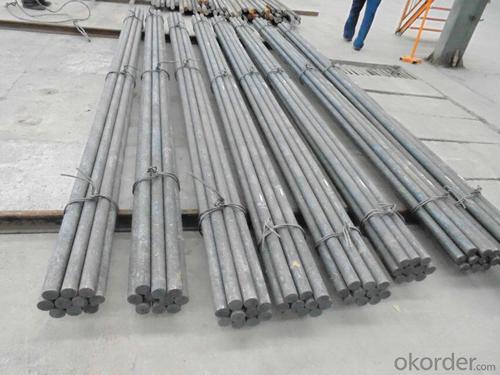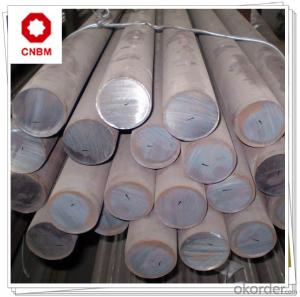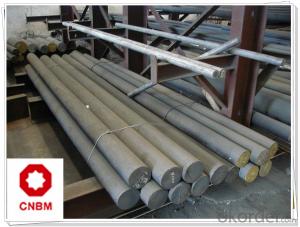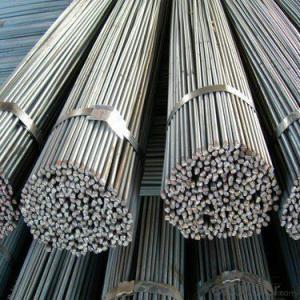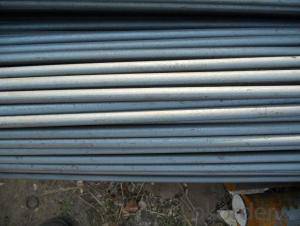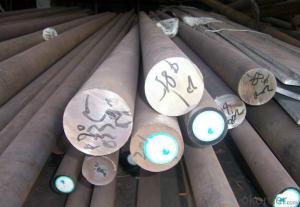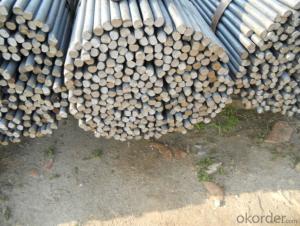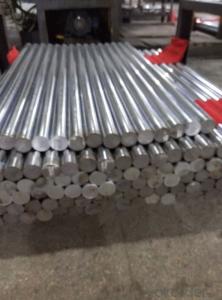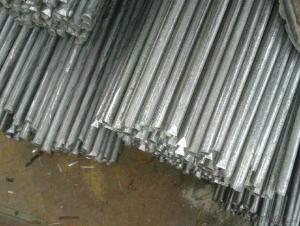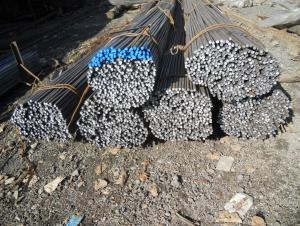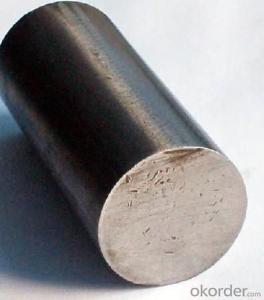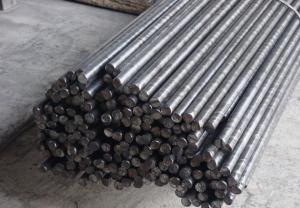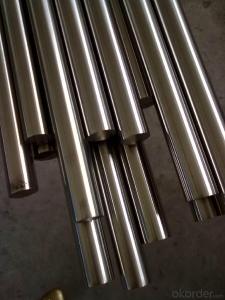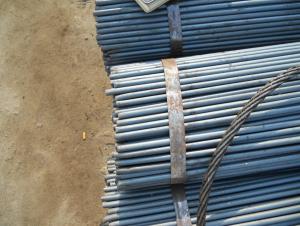Round Bar Chromed Steel Round Bar-Steel Round Bar Q235
- Loading Port:
- Tianjin
- Payment Terms:
- TT OR LC
- Min Order Qty:
- 25 m.t.
- Supply Capability:
- 20000 m.t./month
OKorder Service Pledge
OKorder Financial Service
You Might Also Like
Specification
Product Description:
OKorder is offering High quality Round Bar Chromed Steel Round Bar-Steel Round Bar Q235 at great prices with worldwide shipping. Our supplier is a world-class manufacturer of steel, with our products utilized the world over. OKorder annually supplies products to European, North American and Asian markets. We provide quotations within 24 hours of receiving an inquiry and guarantee competitive prices.
Product Applications:
Round Bar Chromed Steel Round Bar-Steel Round Bar Q235 are ideal for structural applications and are widely used in the construction of buildings and bridges, and the manufacturing, petrochemical, and transportation industries.
Product Advantages:
OKorder's Round Bar Chromed Steel Round Bar-Steel Round Bar Q235 are durable, strong, and resist corrosion.
Main Product Features:
· Premium quality
· Prompt delivery & seaworthy packing (30 days after receiving deposit)
· Corrosion resistance
· Can be recycled and reused
· Mill test certification
· Professional Service
· Competitive pricing
Product Description:
Specifications of High Quality Round Bar
1. Grade: GB, JIS, ASTM, EN
2. Grade: Q235, SS400, A36, S235JR
3. Diameter and mass: As below
Diameter | Mass | Diameter | Mass | Diameter | Mass |
(mm) | (kg/m) | (mm) | (kg/m) | (mm) | (kg/m) |
6 | 0.22 | 22 | 2.98 | 53 | 17.30 |
7 | 0.30 | 24 | 3.55 | 56 | 19.30 |
8 | 0.40 | 25 | 3.85 | 60 | 22.20 |
9 | 0.50 | 26 | 4.17 | 63 | 24.50 |
10 | 0.62 | 28 | 4.83 | 65 | 26.00 |
11 | 0.75 | 30 | 5.55 | 70 | 30.20 |
12 | 0.89 | 32 | 6.31 | 75 | 34.70 |
13 | 1.04 | 34 | 7.13 | 80 | 39.50 |
14 | 1.21 | 36 | 7.99 | 85 | 44.50 |
15 | 1.39 | 38 | 8.90 | 90 | 49.90 |
16 | 1.58 | 40 | 9.86 | 95 | 55.60 |
17 | 1.78 | 42 | 10.90 | 100 | 61.70 |
18 | 2.00 | 45 | 12.50 | 120 | 88.85 |
19 | 2.23 | 48 | 14.20 | 140 | 120.93 |
20 | 2.47 | 50 | 15.40 | 150 | 138.82 |
4. Material: Mild Steel
5. Heat treatment of high quality steel:
Fire: Isothermal annealing temperature is 800 ~ 880 °C, with 10 ~ 20 °C, the furnace cooling to about 600 °C, hardness above HB269.
Preheat temperature: 730-730 °C
Quenching temperature: 1190-1210 °C
Tempering temperature: 540-595 °C
Cold drawn, hardness 285 HBS
Cold drawn after annealing condition, hardness 277 HBS
Quenching methods: oil quenching, air cooling or salt bath quenching
Usage and Applications of High Quality Round Bar
1) Suitable for making various strong cutting tool abrasion resistance, impact resistance.
2) Used to produce all kinds of high hard and super hard saw blade, drill, tap, broach, gear hob and various kinds of milling cutter.
3) Used for advanced punching die, screw die, and the toughness and complicated shape of the punch, etc.
4) Is used for cold forging die and drawing mode, etc.
5) Recommended watchcase factory, screw factory and other cold stamping products industry use.
Packaging & Delivery of High Quality Round Bar
Packaging Detail: All goods are packed in bundle with steel strips and shipped by break bulk vessel or container (depend on target market and different ports)
Delivery Detail: 45 days
Trade terms: FOB, CFR, CIF
MOQ: 25 tons per specification; we can negotiate the quantity if the specification is normal or we have stock of one specification.
Weight: The price invoicing on theoretical weight basis or actual weight basis depends on customer’s request.
Shipment: The shipment of bulk break or container is depends on customer’s request and the situation of the port of destination.
Documents given: Full set of original clean on board bill of lading; Original signed commercial invoice; Original packing list; Policy of insurance; Certificate of origin and what the target market needs.
Production Flow of High Quality Round Bar
The common processes are preheated forging quenching, dual refinement solution process, cooling quenching and isothermal quenching. We use heat treatment for dual refinement solution process. The main measures process is high temperature solution and refinement cycle. High temperature solution can improve the carbide morphology and particle size. The aim is to make the loop refinement ultrafine austenite grains.
FAQ:
Q1: How soon can we receive the product after purchase?
A1: Within three days of placing an order, we will begin production. The specific shipping date is dependent upon international and government factors, but is typically 7 to 10 workdays.
Q2: How do we guarantee the quality of our products?
A2: We have established an advanced quality management system which conducts strict quality tests at every step, from raw materials to the final product. At the same time, we provide extensive follow-up service assurances as required.
Q3: What is the normal tolerance of Hot Rolled Mild Steel Angle Beams for Structures and for Buildings?
A3: Normally 3%-5%, but we can also produce the goods according to the customers' requests.
Images:
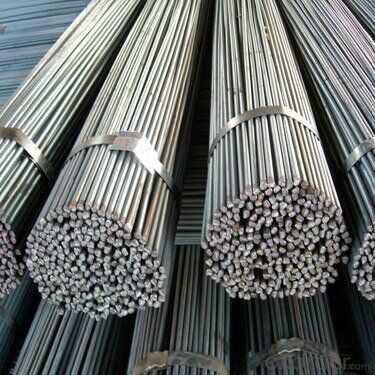
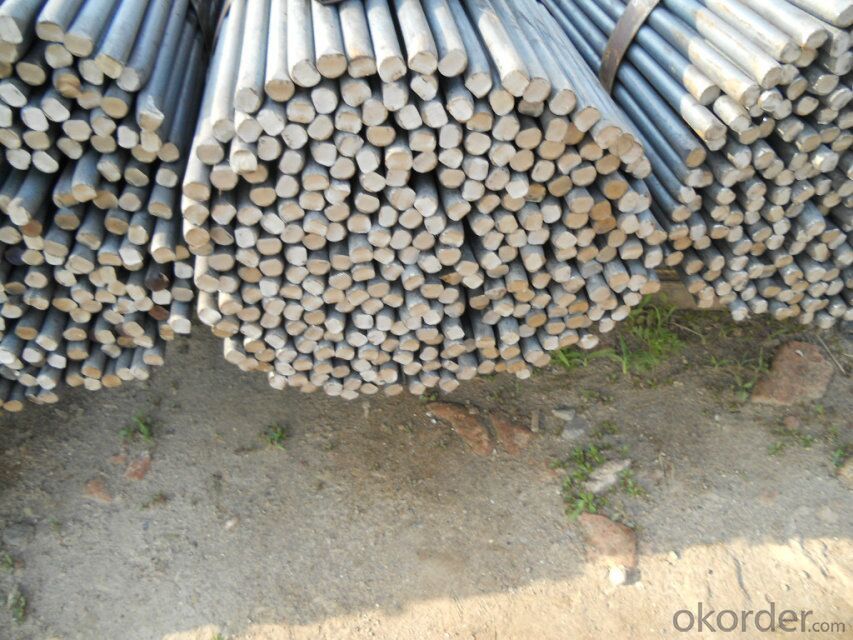
- Q: What are the different joining methods for steel round bars?
- There are several different joining methods for steel round bars, including welding, brazing, and mechanical fastening. Welding involves melting the ends of the bars and fusing them together, creating a strong bond. Brazing is a similar process but uses a lower temperature filler metal to join the bars. Mechanical fastening methods, such as using bolts or screws, involve securing the bars together with external connectors. The choice of joining method depends on factors such as the application, desired strength, and ease of implementation.
- Q: What is the difference between a rough turned and a hot rolled steel round bar?
- A rough turned steel round bar is a type of steel bar that has been partially machined to remove imperfections and excess material, leaving a rough surface finish. This process helps to refine the dimensions and shape of the bar, making it more accurate and consistent. On the other hand, a hot rolled steel round bar is a type of steel bar that has been heated to high temperatures and then passed through a series of rollers to achieve the desired shape and size. This process results in a smooth surface finish and provides a uniform grain structure, which enhances the strength and durability of the steel. In summary, the main difference between a rough turned and a hot rolled steel round bar lies in the surface finish and manufacturing process used to produce them.
- Q: Can steel round bars be used in the production of springs?
- Yes, steel round bars can be used in the production of springs. Steel is a common material used in the manufacturing of springs due to its high strength and durability. Steel round bars are often used to create the base material for springs, as they can be easily shaped and formed into the desired spring shape. Additionally, steel round bars can be heat-treated to enhance their mechanical properties, making them suitable for various spring applications. The specific type of steel used will depend on the desired characteristics and requirements of the spring, such as the desired level of flexibility and resistance to deformation. Overall, steel round bars are widely utilized in the production of springs due to their excellent mechanical properties, making them a suitable choice for many spring applications.
- Q: Are steel round bars suitable for the manufacturing of shafts?
- Yes, steel round bars are highly suitable for the manufacturing of shafts. Steel round bars offer excellent strength, durability, and resilience, making them ideal for applications that require transmitting power, such as in shafts. Their uniform shape and consistent diameter also facilitate ease of machining and assembly, further enhancing their suitability for shaft manufacturing.
- Q: How do you prevent warping of steel round bars during machining?
- To prevent warping of steel round bars during machining, several precautions can be taken. First, it is important to use a proper cutting tool with sharp edges and the right cutting speed to minimize heat generation. Additionally, using lubricants and coolants during the machining process can help dissipate heat and reduce friction. It is also crucial to ensure that the workpiece is properly secured to minimize vibration and movement during machining. Finally, allowing sufficient time for the steel round bars to cool down gradually after machining can help prevent warping.
- Q: Can steel round bars be anodized?
- No, steel round bars cannot be anodized because anodizing is a process that is specifically designed for aluminum and its alloys. Anodizing involves creating an oxide layer on the surface of the metal, which provides enhanced corrosion resistance and can also be used for decorative purposes. Steel, on the other hand, does not form a stable oxide layer like aluminum, and therefore cannot be anodized in the same way. However, there are other surface treatment options available for steel, such as galvanizing or powder coating, which can provide similar benefits.
- Q: What are the applications of steel round bars in the aerospace industry?
- Due to their exceptional strength, durability, and versatility, steel round bars are extensively utilized in the aerospace industry. These bars find application in various areas, including the following: 1. Structural Components: In the production of structural components in the aerospace industry, steel round bars are commonly employed. Aircraft frames, landing gear, wing spars, and other critical structural elements are manufactured using these bars. Steel's high tensile strength guarantees the structural integrity and safety of the aircraft. 2. Fasteners: Fasteners such as bolts, screws, and pins are produced using steel round bars. These fasteners play a crucial role in holding different parts of the aircraft together. Steel's strength and resistance to fatigue make it the ideal material for these vital connections. 3. Engine Components: Various engine components are manufactured using steel round bars. Shafts, crankshafts, connecting rods, and turbine blades are among the components that benefit from the use of these bars. These components need to withstand high temperatures, pressure, and mechanical stress, and steel's heat resistance and strength make it suitable for these demanding conditions. 4. Landing Gear: The landing gear of an aircraft experiences immense stress during takeoff, landing, and taxiing. Steel round bars are used in the construction of landing gear components such as axles and struts. The high strength and toughness of steel ensure the landing gear's ability to withstand the forces encountered during landing operations. 5. Tooling and Fixtures: Tooling and fixtures necessary for the production and maintenance of aircraft are manufactured using steel round bars. These tools and fixtures are utilized in various processes, including machining, assembly, and inspection. Steel's hardness and machinability make it the ideal material for these applications. In conclusion, steel round bars have a wide range of applications in the aerospace industry, including structural components, fasteners, engine parts, landing gear, and tooling. The unique combination of strength, durability, and versatility offered by steel is essential in guaranteeing the performance, safety, and reliability of aerospace systems.
- Q: What are the advantages of using aluminum-alloy steel round bars?
- Aluminum-alloy steel round bars offer numerous benefits. Firstly, they have an outstanding strength-to-weight ratio, combining the lightweight properties of aluminum with the strength of steel. This makes them ideal for industries like aerospace and automotive, where reducing weight is crucial for enhancing fuel efficiency and performance. Secondly, these bars exhibit exceptional corrosion resistance. When exposed to air, aluminum forms a protective oxide layer that prevents further corrosion. This makes them suitable for outdoor applications or environments with high moisture or chemical exposure. Additionally, aluminum-alloy steel round bars are highly malleable and can be easily machined or formed into various shapes. This versatility enables the production of complex parts and components, making them invaluable in industries such as construction and manufacturing. Furthermore, these bars possess excellent thermal and electrical conductivity, making them preferred choices for applications requiring heat dissipation or electrical conduction, such as heat sinks or electrical connectors. Lastly, aluminum-alloy steel round bars are highly recyclable, with a recycling rate of over 90%. This not only reduces the environmental impact but also offers cost savings in material sourcing. In conclusion, the advantages of aluminum-alloy steel round bars encompass their exceptional strength-to-weight ratio, high corrosion resistance, malleability, thermal and electrical conductivity, and recyclability. These qualities make them invaluable for a wide range of applications across various industries.
- Q: How do steel round bars compare to other types of steel products?
- Steel round bars are a versatile and widely used steel product that has distinct advantages over other types. Firstly, their circular cross-section provides excellent strength and stability, making them ideal for load-bearing applications in construction, automotive, and manufacturing industries. Compared to steel plates or sheets, steel round bars offer greater customizability. They can be easily cut, drilled, and machined to meet specific requirements, allowing for complex shapes and precise dimensions. This adaptability makes them preferred in engineering and fabrication projects. In addition, steel round bars have exceptional tensile strength and durability, ensuring long-lasting performance even in demanding environments. They are highly resistant to corrosion, impact, and wear, making them suitable for outdoor or high-stress applications. Their durability also contributes to cost-effectiveness, as they require minimal maintenance and have a lengthy lifespan. Another advantage is the wide range of grades and alloys available for steel round bars. This allows for the selection of bars with specific properties, such as increased hardness, heat resistance, or enhanced machinability. The availability of various grades ensures that steel round bars can be tailored to meet specific performance requirements, making them a versatile choice for engineers and designers. In conclusion, steel round bars offer several advantages over other steel products. Their circular cross-section provides strength and stability, while their customizability allows for precise shaping. They are durable, resistant to corrosion and wear, and available in various grades, making them suitable for a variety of applications across different industries.
- Q: What is the maximum length of a steel round bar that can be produced?
- Various factors, including the manufacturing process, equipment size and capacity, and logistical constraints, dictate the maximum length of a steel round bar. Typically, steel round bars can range from a few feet to several hundred feet in length. However, it is important to acknowledge that longer lengths may have certain limitations or considerations. For instance, hot rolling mills often determine the maximum length of a steel round bar based on the size and capacity of the rolling mill. The bar's length must fall within a range that the machinery can effectively roll and process. Additionally, transportation and handling logistics can also impose restrictions on the maximum length of a steel bar. Longer bars may necessitate specialized equipment or meticulous planning to ensure safe and efficient movement. Consequently, considering the specific production capabilities and constraints of the steel manufacturer or supplier becomes crucial when determining the maximum length of a steel round bar that can be produced.
Send your message to us
Round Bar Chromed Steel Round Bar-Steel Round Bar Q235
- Loading Port:
- Tianjin
- Payment Terms:
- TT OR LC
- Min Order Qty:
- 25 m.t.
- Supply Capability:
- 20000 m.t./month
OKorder Service Pledge
OKorder Financial Service
Similar products
Hot products
Hot Searches
Related keywords
